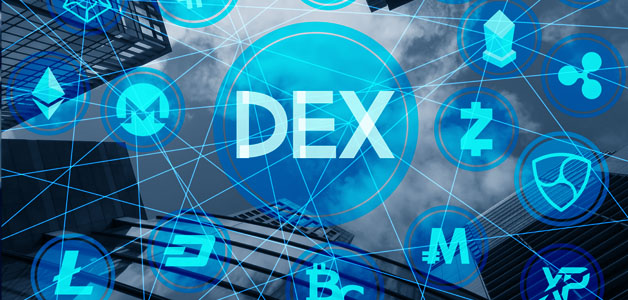-
The availability of various blockchain platforms and types of crypto exchanges render the crypto trading scenario quite complex. For instance, it requires users to take multiple steps to trade a token or crypto on the Binance Smart Chain (BEP-20) that is not available on it but, for instance, on an Ethereum-based crypto exchange. It then requires investing a lot of time in looking through and evaluating decentralized finance (DeFi) applications, especially when considering new users. Even experienced users require planning how to monitor wrapped token blockchain fees and become familiar with various UIs. Cross-chain decentralized crypto exchange (DEX) development emerges as an alternative to address this challenge. The cross-chain technoloy integration with a DEX enables it to utilize smart algorithms to execute and complete trade orders across blockchain ecosystems. Cross-chain DEX based on aggregators executes orders immediately and at the most efficient price. Indeed, they extend DeFi's capabilities more efficiently. Continue reading this article to explore cross-chain technology and cross-chain DEX in detail. Also, Visit | Develop a Decentralized Exchange like PancakeSwap
What is a Cross-Chain Bridge or Cross-Chain Technology?
Cross-chain, as its name suggests, permits the transfer of data, digital assets, NFTs, or cryptocurrencies from one blockchain platform to another. Tokens can move with ease across blockchains than they could have on separate blockchains, thanks to cross-chain technology. These cross-chain bridges serve as a medium across several cryptocurrency exchanges worldwide. Although it is feasible to exchange data between multiple blockchains, doing so without a cross-chain bridge is challenging, expensive, and time-consuming. Without cross-chain bridges, cryptocurrency exchanges require converting a cryptocurrency into a local currency. This practice is typically subject to transaction fees. Then, we need to convert a cryptocurrency a second time, and it again involves a charge. It takes a lot of time as a result. However, cross-chain technology enables transactions between blockchains without first converting them into fiat money. From one blockchain to another, it is possible to swap cryptocurrencies, as well as other assets like NFTs and smart contracts. Also, Read | Developing a Decentralized Crypto Exchange like Uniswap
Cross-Chain DEX: What is it?
Many DeFi initiatives' success depends on their cross-chain compatibility. Cross-chain DEXs follow the concept of aggregators. They use an emerging multi-chain network technology to form a pool of liquidity. By utilizing intelligent algorithms and asset diversification strategies, they allow users to transact across numerous blockchain ecosystems. It results in increasing liquidity and trading volumes and expanding the market for decentralized finance. For DeFi to fully benefit from interoperability and liquidity across several chains, cross-chain DEX is a must. Also, Read |The Rise of Crypto Derivatives Exchange Development
Cross-Chain DEX: How it Works?
Cross-chain DEXs benefit from the knowledge of other aggregators and DEXs. To combine liquidity from many blockchains, they utilize cutting-edge multi-chain networks like EmiSwap. Cross-chain aggregators increase liquidity and asset diversification in the decentralized finance sector by employing the interoperability provided by linked blockchain architecture. Cross-chain DEX aggregators employ smart algorithms to choose the most efficient paths between various blockchain ecosystems to complete trade requests. Users can instantly switch between tokens on networks because aggregators can quickly execute orders at the lowest cost across several protocols. On the Binance Smart Chain, Polkadot, Solana, Kucoin, and Polygon, you can build a cross-chain DEX aggregator. Decentralized finance offers an alternative to depending on centralized infrastructure. It gives users the ability to function in an unfettered environment. Due to the increase in cross-chain DEX development, DeFi is one step closer to attaining this objective. Also, Check | Compact Insights into Decentralized P2P Exchange Development
Cross-Chain Features and Advantages for DEX
The benefits of cross-chain features for a DEX powered by blockchain technology include the following:
Interoperability
Cross-chain bridges address one of the critical issues that users face in the blockchain sector. Interoperability enables traders to exchange digital assets with other blockchains without jeopardizing the host network. It offers a single platform where you may work with various cryptocurrencies and conduct transactions on many blockchains. This functionality of cross-chain bridges eliminates the trouble of handling many wallets at once.
Cross Collateral
These bridges have a feature called cross collateral. It enables the trading of one digital asset for another through a custom-built controlled ecosystem.
Low-Risk Trading
Users always possess private keys to tokens or other digital assets. Any vulnerability associated with security breaches is eliminated by this feature.
Frictionless Trading
Users being able to retain their assets in a single wallet rather than having separate wallets on each blockchain network is one of the most significant and practical aspects of cross-chain features. It reduces concerns related to time and liquidity with quicker transaction times.
Decentralized Crypto Trading
The cross-chain exchanges execute transactions in a decentralized and without the aid of a third party. There are no interoperability problems when users exchange digital assets. In Trends | A Guide to Understanding Hybrid Crypto Exchange Model
Work with Oodles to Develop Cross-Chain DEX
Cross-chain is the technology that will help DEXs evolve in the future. We offer cross-chain DEX development through smart contracts that let users transfer various tokens across various blockchains from a single DEX platform. Get in touch with our crypto exchange developers to get started with cross-chain DEX development.

Our Offices
INDIA
Emaar Digital Greens, Sector 61,
Gurugram, Haryana
122011.
Welldone Tech Park,
Sector 48, Sohna road,
Gurugram, Haryana
122018.














